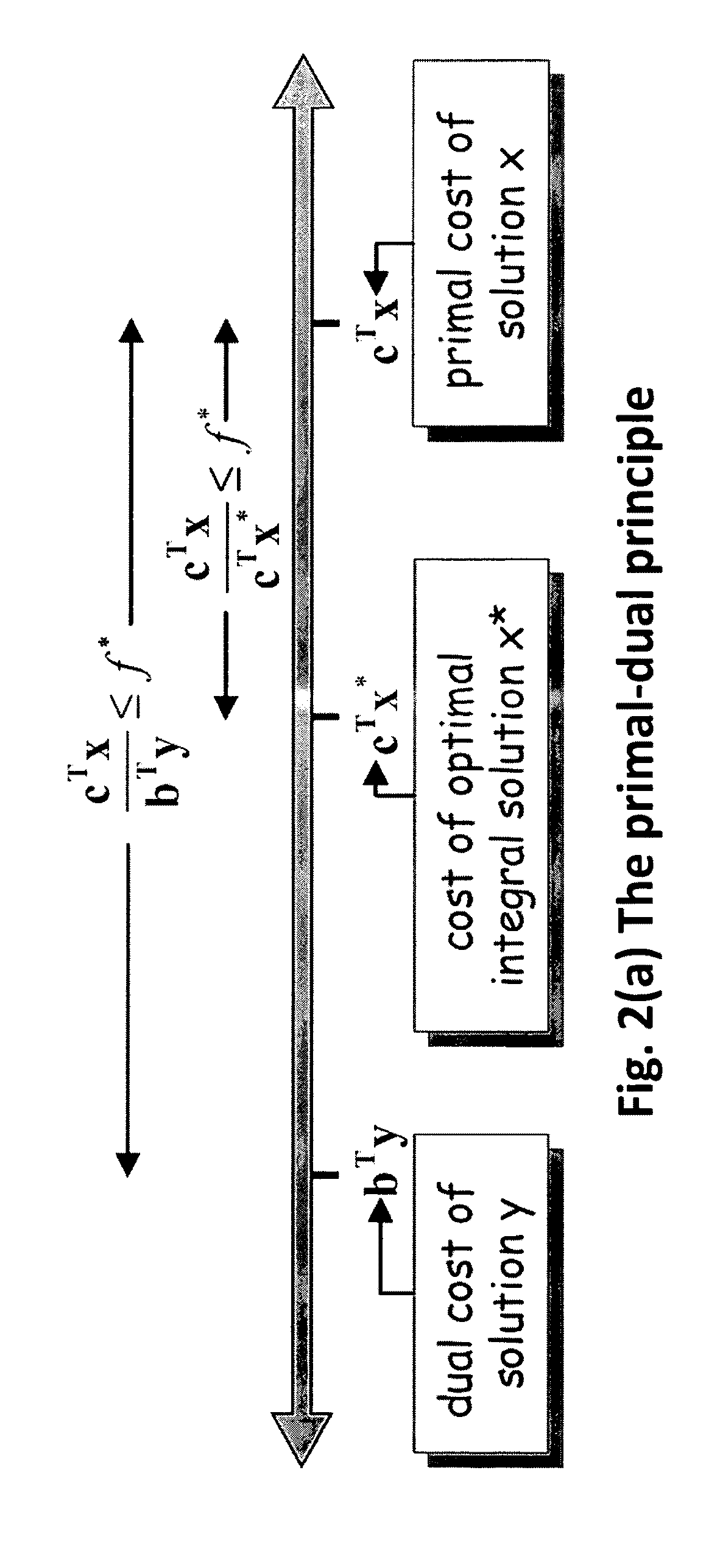System and method for optimizing single and dynamic markov random fields with primal dual strategies
a dynamic and single-variable field technology, applied in the field of application of markov random fields (mrfs) to medical imaging and computer vision, can solve problems such as efficiency not compromise, and achieve the effect of boosting the optimization performance of static mrfs and not compromising efficiency
- Summary
- Abstract
- Description
- Claims
- Application Information
AI Technical Summary
Benefits of technology
Problems solved by technology
Method used
Image
Examples
case 1
following two inequalities hold true:
loadpq(c, xq)≦wpqd(c, xq), (23)
loadpq(xp, c)≦wpqd(xp, c), (24)
then the lemma follows directly from Lemma A.2.
CASE 2: It thus remains to consider the case where at least one of the inequalities (23), (24) is violated. Then (and only then), PREEDIT DUALS (by definition) will adjust ypq(c) so that:
loadpq(c, xq)=wpqd(c, xq). (25)
Hence, condition (23) will be restored after the adjustment. It may be assumed that condition (24) will remain violated after the adjustment, or else one would fall back to Case 1, i.e. it may be assumed that:
loadpq(xp, c)>wpqd(xp, c). (26)
Based on inequalities (25), (26) and the definition of capacities in (14), (15), it then results that cappq=capqp=0. This implies that y′pq(c)=ypq(c), and it can then be shown that:
load′pq(c, xq)=loadpq(c, xq),
load′pq(xp, c)=loadpq(xp, c).
But then:
load′pq(c, xq)=loadpq(c, xq)=wpqd(c, xq)≦wpqdmax;
and also:
[0124] loadpq’(xp,c)=loadpq(xp,c)=[loadpq(xp,c)+loadpq(c,xq)]-loadpq(c,xq)=...
PUM
 Login to View More
Login to View More Abstract
Description
Claims
Application Information
 Login to View More
Login to View More - R&D
- Intellectual Property
- Life Sciences
- Materials
- Tech Scout
- Unparalleled Data Quality
- Higher Quality Content
- 60% Fewer Hallucinations
Browse by: Latest US Patents, China's latest patents, Technical Efficacy Thesaurus, Application Domain, Technology Topic, Popular Technical Reports.
© 2025 PatSnap. All rights reserved.Legal|Privacy policy|Modern Slavery Act Transparency Statement|Sitemap|About US| Contact US: help@patsnap.com



